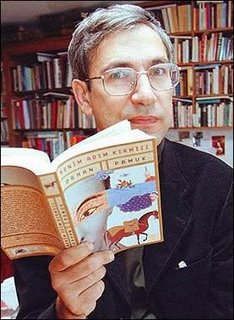Lush and green throughout the year, rocky mountains, the cool waters of the coast and plantations of tea, hazelnuts, tobacco and corn, the Black Sea is a unique part of the country.
The main industry is farming, thanks mainly to the high rainfall, andin the summer the roadsides are lined with hazelnuts drying in the sun. The culture, cuisine, climate and even dialect is different to the rest of Turkey, and the coastal road stretches from east of Istanbul to the border with Georgia.
The cities in this region are Amasya, Artvin, Bolu, Corum, Duzce, Giresun, Gumushane, Kastamonu, Ordu, Rize, Samsun, Sinop, Tokat, Trabzon Zonguldak, Bartin and Karabuk.
Akcakoca is on the far western side of the coast, with endless hazelnutorchards. Inland to the east is Safranbolu, with a wonderful collection of old Ottoman houses, and Devek, famous for its intricately carved walking canes.
Further along the coast are Inkum, Amasra and Cakraz, and then Sinop which has been a port for 1000 years and is still one of the biggest in the Black Sea. The town takes its name from the Amazon queen Sinope and local mythology suggests that femalewarriors, called Amazons, lived in this region. It is now an important industrial and commercial centre.Unye and Fatsa, east of Samsun, are popular holiday resorts with natural scenic beauty, beaches, accommodation, campsites and restaurants.
Ordu is a charming city with hazelnut orchards stretching out for miles in all directions and 46km east is Giresun, with its castle perched on a steep rocky slope, crowning the city and overlooking the beach. This is where the Roman general Lucullus saw cherries for the first time, and liked them so much he introduced them into Europe.
Trabzon is another important commercial port on the Black Sea, and it connects with ports in other Black Sea countries. Trabzon Castle was founded on an area shaped like a table, and the architecture that developed around the castle reflects Byzantine,Commagene and Ottoman styles.
The city’s most important building is the Ayasofya Museum, the interior of which is decorated with frescoes, and the exterior with reliefs. From Boztepe Park and the Ataturk Museum there are stunning panoramic views ofthe city. Inside the Altindere National Park near Macka, the Sumela Monastery is perched on high cliffs overlooking the Altindere valley, and was founded in the 14th century by Alexius III. Inside the monastery is a church, a library, various other rooms and asacred spring.
The area around Rize is the wettest in the country with wonderful shades of green, and is the centre of Turkey’s tea production with plantations on the high terraces.
Hopa is the last Turkish port before reaching the Georgian border, and to the southis Artvin. The city was established on the terraced hills overlooking the Coruh River, which is well known for rafting, and within the province are old Georgian houses and churches.
Black Sea Region is one of the most beautiful regions in Turkey. If you want to experince the natural beauty, see every tone of green, and giant waves of Black Sea , you have to visit Black Sea Region during your next visit to Turkey.

 I have recently moved to New York from Texas. After our arrival on last sunday, our dearest friends Brad and Andrea have taken us to Kapadokya Restaurant in Brooklyn Heights.
I have recently moved to New York from Texas. After our arrival on last sunday, our dearest friends Brad and Andrea have taken us to Kapadokya Restaurant in Brooklyn Heights.

 Turkish Prime Minister Recep Tayyip Erdogan is on a visit to the US with a large delegation and the aim of putting Turkish-American relations back on track. He met with US President George W. Bush for the purpose at the White House on Wednesday, June 8.
Turkish Prime Minister Recep Tayyip Erdogan is on a visit to the US with a large delegation and the aim of putting Turkish-American relations back on track. He met with US President George W. Bush for the purpose at the White House on Wednesday, June 8. Liverpool is the champion: Liverpool won the European Champions Cup for the first time since 1984, overcoming a three-goal deficit to beat AC Milan 3-2 on penalty kicks following a 3-3 tie Wednesday night in the greatest comeback in the tournament's history.
Liverpool is the champion: Liverpool won the European Champions Cup for the first time since 1984, overcoming a three-goal deficit to beat AC Milan 3-2 on penalty kicks following a 3-3 tie Wednesday night in the greatest comeback in the tournament's history.









































